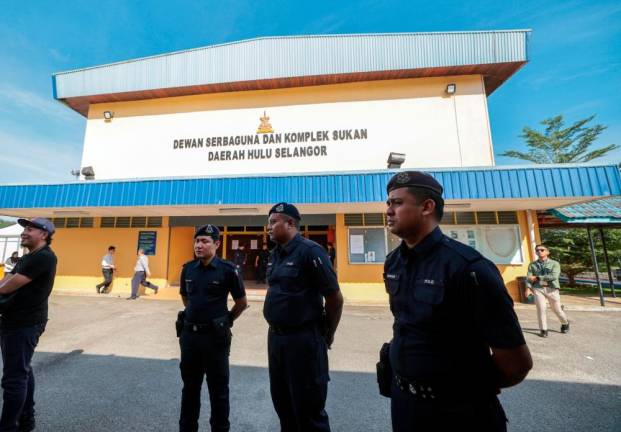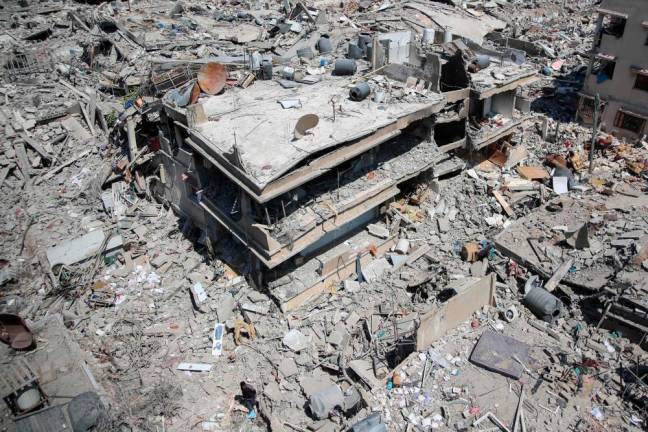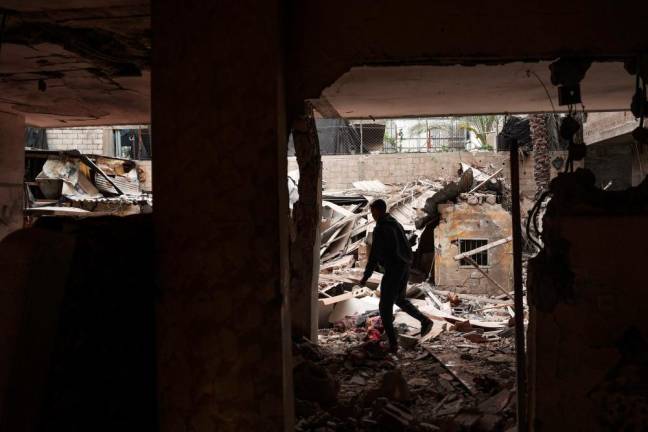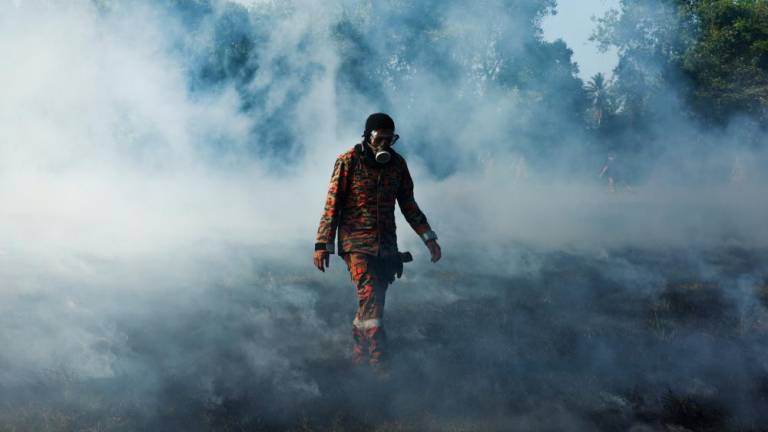WHEN I was posted to Pamol Sabah in 1979, I quickly realised that the Labuk River was very much a part of life at the plantations, which had a long frontage to it. The river could be your friend or your enemy.
It was a stream, narrow and blue from the foot of Mt Kinabalu, and gained speed and colour as others joined it from Telupid and further to the valleys of the Masasau range.
Later the steep valleys turned to wide banks where small huts stood, and it was only near Pamol where the Tungud joined the Labuk that it turned into a mighty river even in the dry season. Then it would fork and form the Klagan, but the original Labuk would go on to the bay at Beluran.
From where I was on the plantation, I could see across the wavelets, the police station and the village of Tagas Tagas on the other side, looking like toy houses. The bend in the river made it look even bigger than it was.
The river would serve as our highway. I have been on the open canoe or jongkong down to Beluran with Malong the boatman, and his assistant Yakdong sitting in front. Up on the mangrove trees a big family of proboscis monkeys with their babies fed on the leaves, barely looking at us.
Malong would sometimes take a shortcut and take the route between some nipah palms, and I could smell the mud as we pushed the fronds aside to let us through.
The river was winding and we saved time without going a long way and coming back to nearly the same spot. Some of the stretches were straight because of the oxbow lakes that had been cut off from the course. We could see they were a place for otters and herons stalking silently. The water was rich with fish and prawns. Sometimes crocodiles would be on the bank enjoying the sun.
Yakdong, the slim Bugis man, was at the bow to spot any sunken logs but he was not always successful. When hitting a log, the outboard propeller would stop and Malong would go through his box and put a new pin so the propeller could spin again. He knew his job and did not cease to smile. He was a Filipino who lived in Pamol and he knew the river.
He also knew how to avoid the train of logs that would be towed to some log-ponds near Sandakan. The river was also the highway for tugboats and dumb barges that would load logs that were sinkers, such as merbau.
In the wet season, the Labuk’s character would change. The river would rise, and it would be our enemy.
With the force of the water, the logs from upriver could break loose and rush down to hit the jetty, and make it disappear. Some parts of the bank would be gone.
The waters could rise when you were asleep. The rains upstream would be the cause and suddenly you may find the river coming into your house.
It was usually near November when the wet season would start. The clouds would be low and the rains would pound the roof and would not stop.
By October, the estates would be ready. It was a routine that did not fail over the years. The assigned teams would check the boats for leaks, service the Yamaha outboard motors and stock enough petrol.
The senior supervisors would brief the juniors on flood relief work and hand out walkie-talkies. When the floods arrived with rage, the workers would move to high ground, even to sleep at the factory premises if necessary. Rice, sardines, sugar and instant noodles would be ready while hospital assistants would stock enough medicines.
In my yellow raincoat I would go with planter Aminudin Muhiddin, who handled the jongkong deftly, and we would weave upriver to some of the villages of the Kadazans and Cocos islanders to see if they needed help.
In that way the wrath of the river was blunted, although some damage was inevitable. I needed to get logs from the Fortuna Timber company’s owner Datuk Stephen Leong, to make a new jetty for loading palm oil onto the barge that would call after the floods.
The workers would have their fun. Many parts of the road would be damaged with water rising above the gravel floor but they would wait for fish struggling to cross, and at the shallowest part, they would be ready with their nets.
The only disgruntled people would be some newlyweds. They resented the lack of privacy in the mill area and would lose themselves among the palms and reappear after some time.
When the sunny days returned, it was time for the villagers to plant corn, which grew well with the topsoil freshly deposited along the banks. A few months later, I could buy jagung pulut. The villagers would also plant bananas to replace the clumps that had been left with the flood waters for the Sulu Sea.
By then the workers would have got back to their normal routine, with only some lines on their walls left after cleaning up to show how high the floods had been.
One year, the person with the real loss was transport contractor Ah Kiang, who reared crocodiles for their skin, and with the might of the flood they had escaped. But I have not heard of anyone being killed by a crocodile while I was there.
The Labuk would be our friend again. It would be possible for the big boats, called the kumpit, owned by towkay Tompeh to come up with fertiliser for the estates, food supplies for the shops and beverages for the staff club, and bags of kernels to go down to buyers in Sandakan.
In a matter of days in February, the mud would once again turn into dust, which rolled along the road to make your hair turn wiry and brown if you were following behind another vehicle.
With the sky clear and blue, the small Britten-Norman Islander plane would fly again from Sandakan to the estate airstrip with visitors, who would not understand how we had coped with the floods.
Sometimes, I would not take the plane and go by boat to Beluran, and see the scenery. The river would flow as normal and I could sit with the wind in my face as Malong pressed on.
Before Beluran Bay, I would have seen some crocodiles again as they interrupted their basking in the sun and rushed back into the water. I was also pleased to see that high on the mangrove branches the proboscis monkeys were plucking on the leaves and after a glance, they would go back to feeding their babies.
They looked contented. Their family seemed intact. Perhaps they too, like the team on the estates, knew how to prepare for floods.
The writer has extensive experience in the management of oil palm plantations. Comments: letters@thesundaily.com










